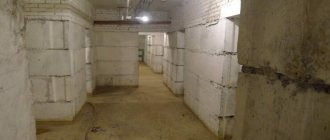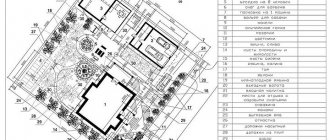The attic is a non-residential space located on the top floor of the house. In most cases, its area is equal to the footage of the apartment located underneath it.
Residents of these apartments often want to expand their home by adding attic space. But it should be remembered that this premises belongs to common property, i.e. belongs simultaneously to all owners of apartments in the building.
Privatizing the attic above the apartment will not only increase the area of housing, but also increase its value.
Is it possible to privatize an attic space?
The privatization of attic space is regulated by Federal Law No. 178 “On the privatization of state and municipal property . In addition, Article 36 of the Housing Code of the Russian Federation states that attics, basements, landings, corridors and elevators are considered property of the house.
The illegal seizure of these premises is a malicious violation of the law. If it is discovered that the attic is being used without the appropriate permission, the violator will have to return the occupied area and compensate the damage to other apartment owners.
Privatization of attic space in an apartment building is possible, but only owners of apartments located on the top floor can take advantage of this privilege.
Reasons for privatizing the attic:
- Creation of a new room (dressing room, leisure room, playroom, etc.).
- An increase in the cost of housing, since an apartment with an attic costs much more than a simple apartment.
- Protection against attacks on the attic by third parties. The privatized premises can no longer be used by other people, even by the local administration.
- For commercial rental. This service is used by legal entities and individual entrepreneurs. After privatization, they can rent out the attic space and receive a fee for it.
It turns out that privatization of the attic is possible for various reasons. This solution may be useful or financially beneficial to the owner. Moreover, such premises can be used for various purposes.
Stage 2. Negotiations with owners
- In Rosreestr , find out if the attic is in someone else's property . If yes, then everything is simple: negotiate the purchase with the owner.
- If no one has purchased the attic before, then it is the common property of the apartment owners. It's more complicated here. To transfer the attic into personal property, the consent of all owners will be required; to rent long-term - ⅔ tenants. To vote, organize a meeting of owners . It is possible that in order to resolve the issue, it will be necessary to register a homeowners association and register common ownership of the non-residential premises of the house.
The result of the stage: written consent of the owners of residential premises for the reconstruction of the attic, executed in the form of minutes of a meeting of residents.
Conditions for privatization
In 2021, only owners of apartments located directly below can privatize part of the attic. This right is not available to residents of municipal housing, so they will first have to transfer ownership of the apartment.
Conditions for privatization of attic space:
- the attic is not privatized by other persons;
- there are no intersections of engineering nodes (gas pipelines, electrical wiring, water supply) on its territory;
- the premises are not classified as emergency;
- residents of the lower and middle floors gave their consent to this procedure.
Sometimes the attic is already privatized, but is not used by the owner . In this case, you can try to negotiate with the owner on a long-term lease or purchase of the premises. To offset the costs, you can later rent out the attic for commercial rent.
When several persons strive to obtain ownership of an attic at once, in most cases, an HOA is organized, and the premises are registered as shared ownership.
Reasons for the ban on privatization
Before privatizing an attic, it is necessary to assess its status . According to the law on attic privatization, under certain factors it may be impossible to transfer the premises into your own ownership:
- Important communication nodes are located in the attic. In this case, during privatization it will be difficult for emergency services and the management company to access it.
- The building is one of the properties in line for major renovations.
- The house is scheduled to be demolished.
- The attic has already been privatized by another person.
If any of these reasons are present, privatization of the attic becomes impossible.
Stage 1. Initial inspection and assessment
- Determine if there are service lines in the attic. Keep in mind that utilities need unobstructed access. If communications are discovered, do not rush to get upset. Some of them can be transferred. However, if there is a passage under the roof to an elevator shaft or pipeline, it will not be possible to connect the attic: not a single housing inspection will allow this passage to be blocked.
- Find out if your home is eligible for the capital improvement program. If so, you will have to hold off on the idea of acquiring a second level.
- Assess whether the attic structure is suitable for conversion. Remember that load-bearing walls and beams cannot be demolished.
- Order a technical inspection of the premises and find out whether the roof slope, load-bearing capacity of the floors and the height from ceiling to floor in the attic meet the technical requirements. Required parameters: 33-35 degrees of slope, at least 2.3 meters of height and 150 kgf/sq.m. strength.
The result of the stage: an official conclusion of a technical examination on the suitability of the premises.
How to privatize the attic above your apartment?
Privatization of the attic space above the apartment consists of three stages:
- Obtaining the consent of the remaining residents of the house.
- Decoration of the attic.
- Registration of property rights in Rosreestr.
The first step when deciding to privatize an attic is to find out about the possible location of communication nodes in this room.
To do this, contact the authorities serving them:
- Gas technical inspection;
- Housing Inspection;
- Urban planning or architectural regional department;
- department of the Ministry of Internal Affairs for state fire supervision;
- technical department of Rospotrebnadzor.
To convert an attic, a technical design is required, which must be issued by a company with a special license. Specialists make calculations and then prepare a plan for the inspection authorities.
The Architectural Bureau under the district administration draws up and approves such projects . The Bureau is also updating the technical passport of the attic. You can order technical documentation from BTI.
Step by step procedure
The algorithm for registering the privatization of an attic consists of several stages. There may be slight differences in some regions:
- Finding out the status of the premises.
- Notifying residents of their intention to privatize.
- Obtaining consent from other residents of the house.
- Creating a reconstruction plan.
- Obtaining permits.
- Ordering an examination for attic reconstruction.
- Registration of ownership of the attic space in Rosreestr.
One of the most important stages is the approval of the reconstruction plan. If the attic is converted into a living space, then the consent of the Housing Inspectorate and strict compliance with technical standards is required.
Privatization of attic space is a labor-intensive procedure. The main thing is to respect the interests of government agencies and obtain the consent of other residents.
Illegal privatization of an attic without holding a house-wide meeting and obtaining the consent of all apartment owners in the house threatens the violator with administrative liability in the form of a fine.
Step-by-step algorithm for attic privatization:
- Residents' meeting. Since the attic belongs to the property of the house, the consent of the owners of privatized apartments is required. To do this, it is recommended to hold a house-wide meeting. A notice must be sent out in advance. They must be sent at least 10 days before the meeting date.
- Collecting votes. At a general house meeting, residents must vote for or against the privatization of the attic. Their decision must be recorded in writing. If any of the residents disagree, the meeting organizer should be more vocal and try to convince them to change their decision. If there are residents who disagree or abstain from voting, the privatization process may be delayed. All signatures are placed on a special document, which is then submitted to the local administration.
- Obtaining permission to remodel. It is issued by government agencies such as BTI, Criminal Code and Housing Inspectorate.
- Ordering an architectural project from a licensed organization. It must contain the technical characteristics of the premises.
- Approval of the project by the local or district administration. The city planning department will check the project and its compliance with the standards, and then make a decision (consent with the project or reject it).
- Repairing the attic and obtaining a new registration certificate. After receiving an approval from the administration, the stage of repairing the premises begins. After its completion, an application is submitted to the BTI for measurements of the premises by specialists. If no comments are made during this procedure, then upon completion a new registration certificate will be issued.
- Registration of property rights in Rosreestr. An application and the necessary documents are submitted to this authority. Upon expiration of the established period, the privatizer receives an extract from the Unified State Register of Real Estate, which indicates his ownership of the attic. Registrars must also make appropriate changes to the registry.
Stages of designing an attic connection
The essence of connecting an attic is to combine its volume with the volume of the room below. An option is possible with the simultaneous connection of all attic spaces (this is especially true for non-residential buildings). The basis for the design will be the technical specifications of the customer (owner), documents for the premises and the building.
The design process includes the following stages:
- study and evaluation of source documents, results of inspections of the attic, premises and building structures;
- determination of solutions and types of work that are required to connect the attic;
- description and justification of design and planning solutions, preparation of graphic materials (drawings, diagrams, plans);
- calculations and description of strengthening of building structures to eliminate the decrease in strength and stability;
- design of an engineering system for combined premises;
- justification of fire and other safety measures;
- preparation of working documentation on which the work will be carried out;
- preparation of estimates and calculations, selection and preparation of specifications for building materials.
The content of all sections of the project and graphic materials must comply with SP and GOST. The final project is approved by the customer and sent for approval (if necessary).
Dear Clients!
The information in this article contains general information, but each case is unique. You can get a free consultation from our engineers using one of our telephone numbers - call:
8 Moscow (our address)
8 St. Petersburg (our address)
All consultations are free.
Expert commentary. Design and work on connecting the attic are characterized by increased complexity. After changes are made to the design, planning and engineering solutions, the total load on the underlying structures, base and foundation of the building may also change. Only turning to experienced and qualified specialists guarantees that there will be no problems with the safety of the building or approvals.
What is needed for privatization?
The applicant for the attic must submit a list of documents to the registering government agency. It is necessary to collect two packages of documentation: for the attic space and for your own home.
Documents for the attic:
- a copy of the act of the meeting of residents of the house;
- document with signatures of residents;
- a copy of the technical passport of the house;
- permission to reconstruct the attic space;
- a certificate confirming that other persons do not have ownership rights to this premises;
- certificate of inspection of the attic for suitability (issued by the BTI);
- certificate from the Ministry of Internal Affairs of the Russian Federation;
- explication of the building;
- technical data of the attic.
Documents for the apartment:
- technical passport of the apartment;
- an extract from the Unified State Register of Real Estate, which confirms the ownership of this living space;
- title documentation;
- original and copy of the owner's passport.
It is recommended to collect documents in advance, since it may take up to 30 days to receive some certificates (for example, certificates from the BTI). You can also use paid services, in which documents are issued within a few days.
Price
During the privatization of the attic above the apartment, the applicant will face financial costs. First of all, we are talking about cadastral documents. In Moscow and the Moscow region, the cost of obtaining an opinion from the BTI is 30-80 thousand rubles.
Also included in the main costs is drawing up a power supply project. It can cost 40-80 thousand rubles.
Costs will increase when contacting specialized organizations. For their work they can request up to 150 thousand rubles. Separate costs include renovation of the premises.
Deadlines
To obtain ownership of an attic, on average it will take 2-3 months, but sometimes the process takes up to 6 months . The longest time is required to obtain consent for the privatization and reconstruction of premises. BTI will not issue new documents until the attic is restored to proper condition.
Inspection steps for connecting an attic
It is advisable to begin surveys and design work on connecting the attic to the apartment building only after holding a general meeting and obtaining the consent of 100% of the owners of the house. Unfortunately, it is impossible to force the owners to make such a decision, as well as to challenge the refusal. Therefore, you will have to look for all the residents, give them notices of the meeting, and seek approval for the work. Otherwise, all design expenses will be in vain, and the work performed will be considered illegal and uncoordinated.
For the purpose of connecting the attic to a residential or non-residential premises, the following examinations are carried out:
- visual inspection of all premises, structures and engineering systems, their connection points;
- assessment of the actual condition and wear of structures and building elements, identification of damage and defects;
- instrumental diagnostics of system structures, study of the characteristics of building materials at the work site;
- calculations of permissible loads that will arise after completion of the work (this is necessary to select reinforcement options);
- study of technical and operational documentation for the building and premises, technical passports of the BTI.
Since the work will involve impacts on load-bearing structures, their condition is studied and the necessary measurements and calculations are carried out. Based on the results of such an examination, a technical report is drawn up on the condition of the load-bearing structures. Experts will draw a conclusion about the possibility or impossibility of carrying out the work, and give recommendations on safety and reinforcements.
Registration cost
Having your own attic in an apartment building is always so tempting. It’s rare that any of the residents on the upper floors don’t dream about it. But when it comes to the cost of such transformations, the fervor diminishes a little.
At every stage of progress towards your dream, you will face significant expenses. The amounts that have to be paid for various works depend on many nuances.
Waste begins from the very first moment - communicating with neighbors and obtaining their consent to privatize the attic. It is not a fact that they will give you consent free of charge, because the residents “lose” part of such valuable common property.
It is difficult to say whether you need to pay for consent, but if there is no way out, you will have to use this argument.
The following expenses are associated with obtaining the results of technical expertise. For this document you will have to pay from 30 to 60 thousand rubles. It is quite expensive to redevelop the premises and call BTI representatives.
Since you are faced with visiting a huge number of different authorities, you will need money more than once. Paying for certificates speeds up their receipt.
Having received all kinds of papers and permits, the reconstruction itself awaits you. How much money it will absorb depends on what your plans are and what exactly you want from this premises.
Design methods
To get an attic space and attach it to a living space, you can use two methods:
- register ownership of the object;
- rent premises or receive them for free use.
Which of these methods to use in your case depends on some nuances: whether a Home Owners Association (HOA) with a specific composition and number of owners was registered in the house, whether there are registered rights to shared ownership, etc.
Procedure for performing the procedure
To legalize the right to an attic space, you will have to go through several stages. First of all, start collecting documentation.
You will need documents on ownership of the apartment, as well as information about the object you want to receive:
- papers indicating your legal status (individual or legal entity);
- property rights or other rights to housing;
- as a result of which you acquired the right to residential premises: as a result of a purchase (purchase and sale agreement), as a result of privatization or equity participation, etc. How much do you plan to use?
- in which building the apartment is located - private or public;
- information about the management company that supervises the house;
- information about the Condominium (whether it was registered in accordance with the norms of current legislation), the passport of the apartment building received from the BTI;
- information about HOA registration.







